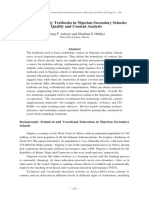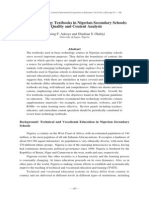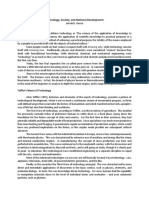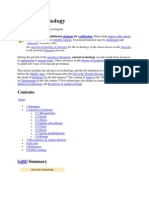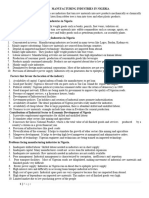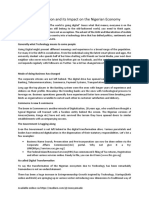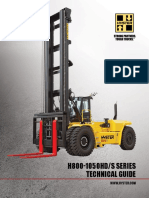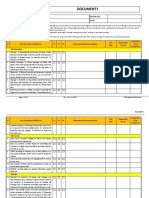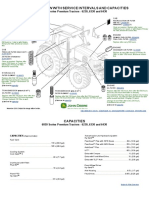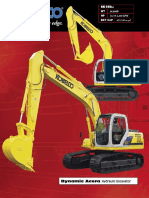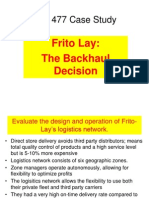0% found this document useful (0 votes)
72 views8 pagesTechnology
This document summarizes the history of technology in Nigeria. It discusses how various ethnic groups developed indigenous technologies suited to their environments and livelihoods. It then outlines some common technologies like farming tools and canoes. The document goes on to provide more details on the history of technologies in Nigeria related to blacksmithing, transportation, agriculture, and drilling for underground water. It notes how technologies have advanced and transformed over time to make work and life easier.
Uploaded by
ibrahimtaofik121Copyright
© © All Rights Reserved
We take content rights seriously. If you suspect this is your content, claim it here.
Available Formats
Download as DOCX, PDF, TXT or read online on Scribd
0% found this document useful (0 votes)
72 views8 pagesTechnology
This document summarizes the history of technology in Nigeria. It discusses how various ethnic groups developed indigenous technologies suited to their environments and livelihoods. It then outlines some common technologies like farming tools and canoes. The document goes on to provide more details on the history of technologies in Nigeria related to blacksmithing, transportation, agriculture, and drilling for underground water. It notes how technologies have advanced and transformed over time to make work and life easier.
Uploaded by
ibrahimtaofik121Copyright
© © All Rights Reserved
We take content rights seriously. If you suspect this is your content, claim it here.
Available Formats
Download as DOCX, PDF, TXT or read online on Scribd
/ 8















